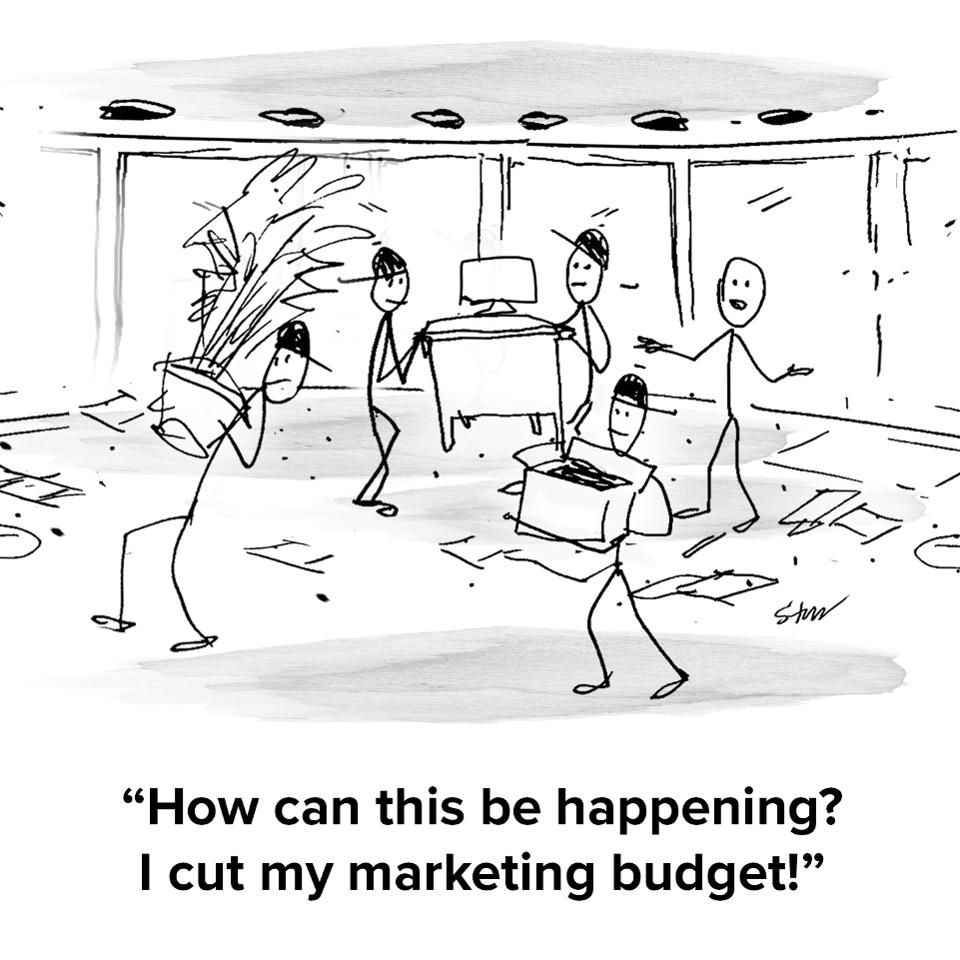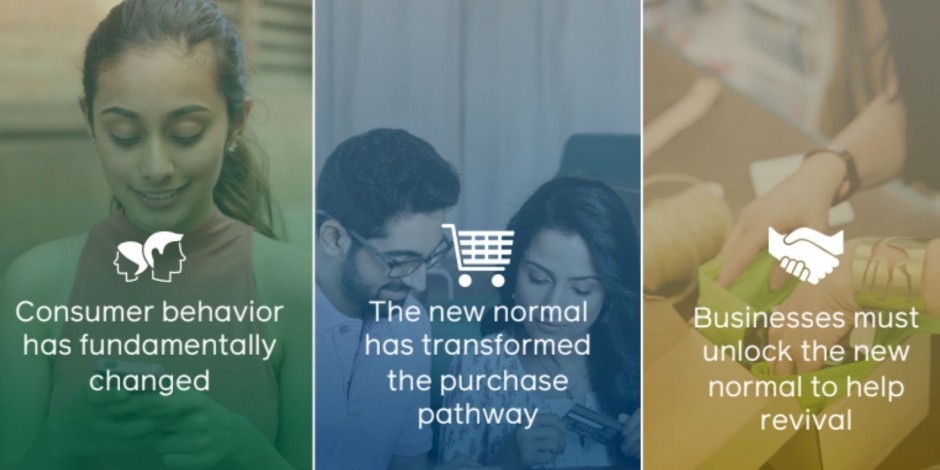By Rodney Laws.
It’s hard to imagine a post-COVID world right now. No one can be sure when we’ll get back to normal and what normal will look like. Trying to plan for the future feels fruitless, and yet it will feel like everything is happening at once, so you need to be prepared.
For business owners and marketing departments, this presents the challenge of how to approach advertising in a post-COVID world. Have the fundamentals changed, and what is a safe promotional route to go down? Here’s how you can pivot your strategy ready for a new world.
Be content cautious
As the reality of coronavirus and lockdown measures started to set in, a new type of marketing content cropped up on our televisions and social media feeds.
Suddenly sentimental, coronavirus-themed content was in every other ad you saw. This uplifting content generally focused on people’s sacrifices throughout the crisis, how we’re all in this together, and what businesses are doing for you in your time of need. For many, this content provides assurance and shows companies understand what people need most.
The question for marketers once this crisis is over, or at least starting to wind down, is how do you move on from this content, and will coronavirus-tinged content still be appropriate? As people assess the full impact of the virus is it right to use their situation to push them towards purchases, if it ever was?
To pivot your content direction post-COVID you need to be aware of the genuine concerns people will have in regards to making coronavirus your focus. You need to balance the fine line of being aware of the current circumstances without appearing to take advantage of them.
Creating media that captures the public mood and shows appreciation for their feelings can really grab attention and cut through the mass of competition of social media channels. People don’t mind being advertised to if they think the brand genuinely has their best interests at heart. That involves offering something back, even if it’s just a message of support.
You should also look to create content that is genuinely informative. Try and educate people within your specialism on the common coronavirus issues. Slipping in a bit of promotional while doing so is fine, as you’re providing a service. People will want to set up good social distancing measures at work, so suggest creative ways to do so. It may not directly result in conversions, but it’ll build up goodwill with your brand.
The most successful post-COVID content will likely look a lot like the best campaigns we’ve seen throughout the campaign. Let shareable content filmed through Zoom calls inspire you and make sure not to misjudge people’s emotions.
Consider your finances
It’s safe to say most people are expecting things to get a little bit tighter financially after coronavirus.
As if the toil of the virus alone isn’t bad enough, it has also led to significant economic turmoil across the world. With many businesses operating on a much stricter budget — if any budget at all — the money is unlikely to be there for extravagant marketing campaigns. Just like you can’t act like your audience has money to burn, you need to operate securely yourself.
It’s important your marketing starts slowly and tries to avoid as many costly mistakes as possible. Ideally, you can look to follow the example set by small businesses. You don’t need to start from scratch, but approaching your marketing expenses in the way a startup or entrepreneur would will help you make low-investment risks when it comes to pivoting your strategy. These businesses rarely operate with a high-risk, high-reward mentality, which can be a great guide through this tricky period.
Your first campaign after the coronavirus pandemic doesn’t need to be an all-time-great homerun in advertising, but it can’t be something you bet the immediate future of the company on. Businesses are going to be judged not just by how they responded to the outbreak, but how they continue to respond throughout the recovery.
Think small scale with your marketing. Extravagant short films about the bravery of people throughout the crisis may be great, uplifting content, but they can be costly to produce. Whereas taking a more subtle, low-key approach within the budget constraints of a smaller business can help you show support, while accomplishing the long-term promotion and converting goals of your marketing.
Focus on localization
All future marketing strategies in a post-COVID world need to take into consideration the rate at which recovery is happening not just across the world, but in individual countries.
Universal advertising will be irrelevant in the days immediately after the virus. Different messages will mean different things to unique audience. You cannot make content that looks to celebrate defeating the virus available to a region that is still suffering significantly. It is insensitive and will tarnish the respectability and perceived competency of your brand.
Either try and keep your content more general or be hyper-specific in your location. If you want to run an after-COVID paid social campaign, for example, make sure you’re only targeting areas where recovery has been successful and you’re ready to pause it should the worst happen.
While celebrating national success may sound like a great opportunity to balance showing appreciation with brand exposure, this can, especially online, backfire pretty dramatically if you’re not hyper-specific in your execution.
Stick with online services
Despite it feeling like we’re all scratching at the walls looking for an escape from lockdown, it won’t be as simple as everyone rushing back into normal life once it’s lifted.
Not only will there be significant social distancing measures in place, but people’s attitudes and outlook will have changed. People have not just considered what they value, but there will be a residual fear of the virus.
Online services, be it video chat allowing you to talk to your family or an ecommerce store that can keep you stock up throughout lockdown, have shown their worth throughout this pandemic. With people reluctant to dive into normality once again, there will still be a need for these businesses.
All of this is to say you shouldn’t abandon any online services you’ve developed just yet. It’ll be wise to continue promoting these products and services even after coronavirus. Forced exposure to them has only increased interest from the average consumer and business.
Take Zoom as an example. People may be sick of video chats by the time this is all over, but businesses will still find practical uses in it as we return to normality, now aware of a tool that allows them to better connect with business partners abroad and open people up to new types of remote working options.
Likewise, many businesses may stick with remote working for the foreseeable future. This allows you to tweak your marketing, rather than fully pivot it, to just reflect the usefulness of your products and services, rather than play into the whole lockdown and remote working narrative. You don’t need to fully re-think your strategy straight away.
Consider scheduling changes
With efforts to return to normality likely to be slow, you need to consider how you’re going to schedule your content and try and capture attention online.
Before COVID, you were able to research when people were most likely online to try and capture their attention in the most effective way. Numerous studies had been conducted across all the major social platforms, showing when someone was most likely be susceptible to a Facebook video, Twitter Poll or Instagram influencer story.
A lot of these results were determined by pre-COVID schedules. People would commute to and from work roughly at the same time. They’d relax on the couch and browse social media for a bit most evenings. They may be more likely to buy something at a weekend when they have time to sit down and consider the item. That’s all out the window now, and may not be back for a while.
Likewise, people are also going to be spending more time catching up with loved ones if they do choose to go out. There are arguments to suggest that coronavirus could be the end of abject consumerism, and that marketers will have to be more creative in their efforts to draw people away from personal connections and back to social platforms to witness content and advertising.
To acclimatize to the new reality of your customer base you need to either conduct new audience research or find new avenues to reach your base in. A post-COVID strategy will be reflective of new lifestyles, slowly easing itself back into traditional timings. Consider experimenting with new approaches in your advertising, such as Google paid campaigns that can catch search audiences looking for something specific, rather than casting a wide net across social media.
Marketing in a post-COVID world will be challenging, there’s no doubt about that. It won’t be an impossible task though. It will require more audience research and tactile reading of public mood than ever before. Be prepared to backtrack at points and be cautious when taking risks.
Feature Image Credit: Unsplash
By Rodney Laws
Rodney Laws has more than a decade of experience providing marketing advice to online entrepreneurs and businesses. He’s set up and marketed his own businesses and consulted on crafting campaigns for established companies. See what Rodney can do to help you or your business by heading over to EcommercePlatforms.io and visiting @EcomPlatformsio for even more news and views on marketing as an ecommerce brand.









